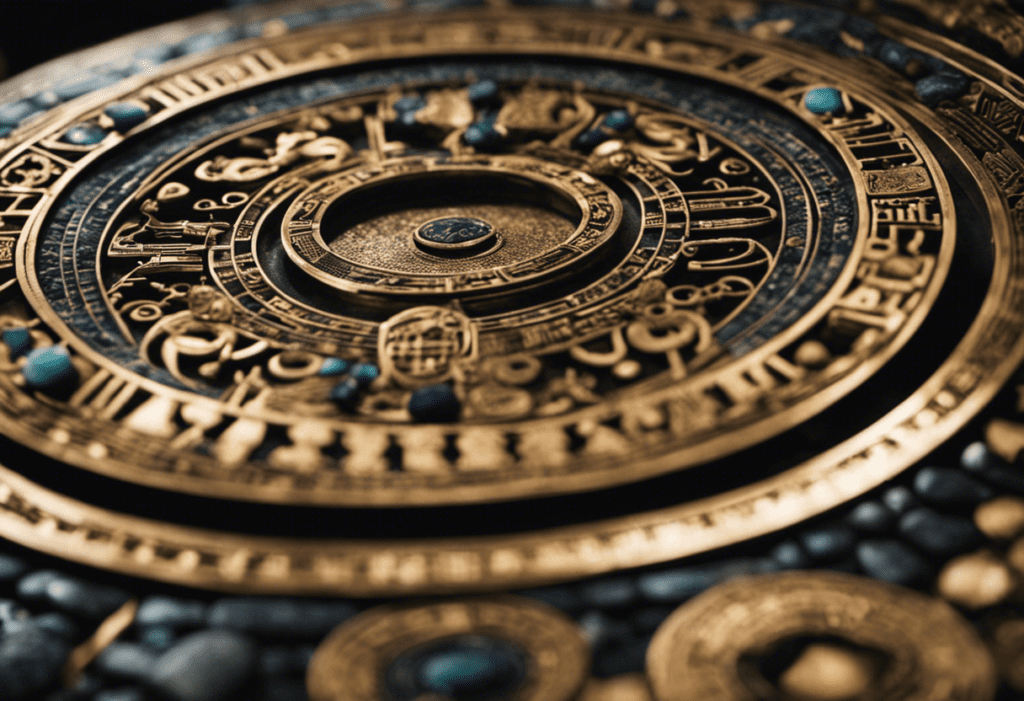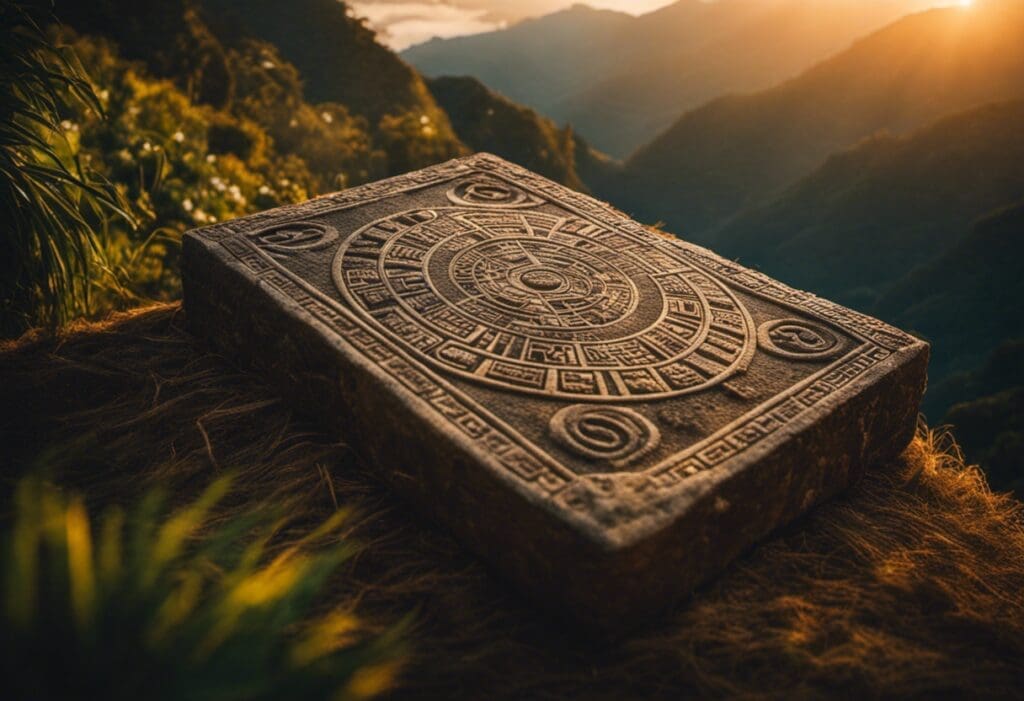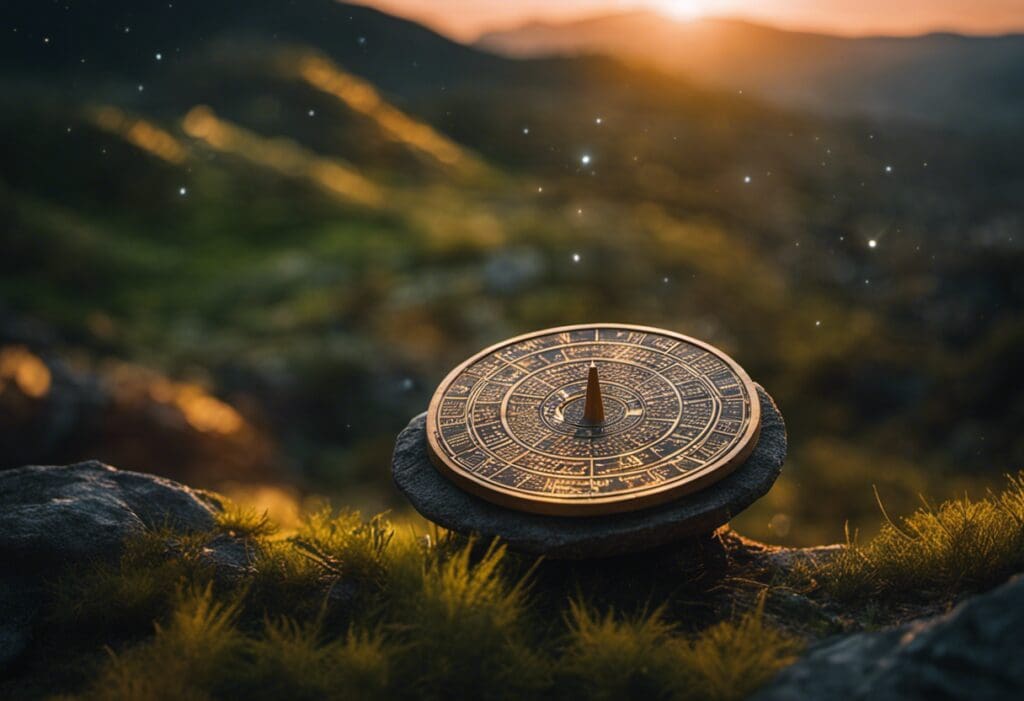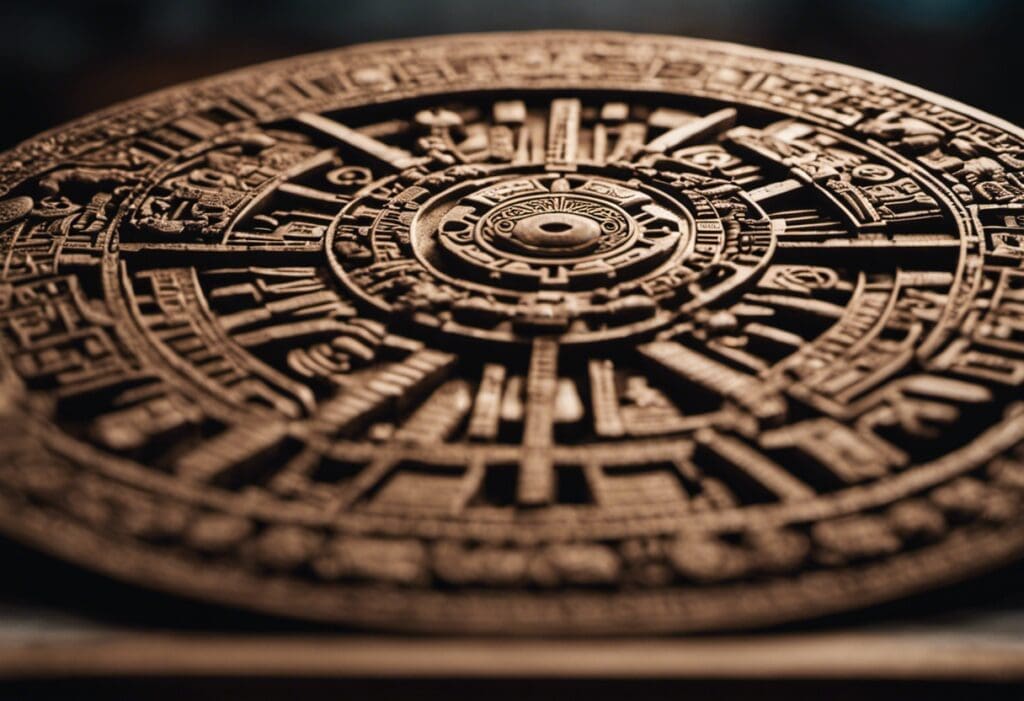Step into a world where time is etched in stone, where ancient secrets lie waiting to be discovered. In this article, we delve into the captivating realm of the Inca calendar relics, unravelling their significance and unveiling the enigmatic timekeeping techniques of the Inca civilization.
Through meticulous preservation and decoding, we unlock the cultural and historical context behind these fascinating artifacts, shedding light on a civilization that revered time as an eternal force.
Join us on this journey as we explore the Stones of Time: Discovering the Inca Calendar Relics.
Key Takeaways
- Inca calendar relics provided insights into ancient timekeeping practices and the Inca civilization’s advanced astronomical knowledge.
- The discovery and preservation of these artifacts have shed light on Inca timekeeping practices and provided valuable archaeological insights.
- The patterns and symbols on calendar stones reveal celestial events and were used to determine solstices and equinoxes.
- The Inca calendar system played a significant role in religious, ceremonial, and agricultural practices, showcasing the Inca’s deep understanding of astronomy and their scientific achievements.
The Significance of the Inca Calendar Relics
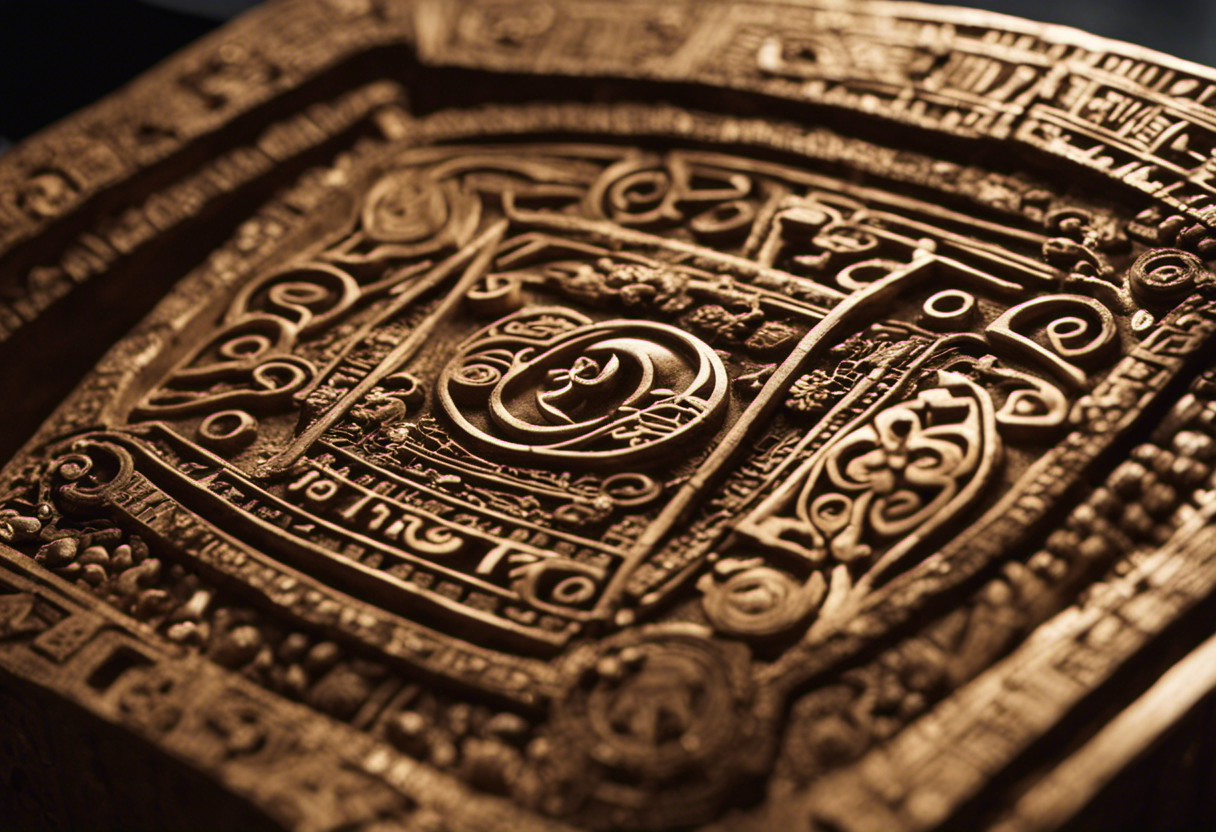

The Inca calendar relics were an integral part of their society, frequently guiding their religious and agricultural activities. These artifacts provide invaluable insights into the understanding of ancient timekeeping practices. The Inca civilization was highly advanced in their astronomical knowledge and possessed a deep understanding of celestial movements. The inca calendar artifacts, such as the Intihuatana and the Quipu, played a crucial role in their timekeeping system.
The Intihuatana, also known as the ‘Hitching Post of the Sun,’ was a stone monument used to track the movement of the sun throughout the year. It was carefully aligned with the solstices and equinoxes, allowing the Inca priests to determine the changing seasons and plan their agricultural activities accordingly. This knowledge was essential for their survival as it enabled them to optimize their crop cultivation and harvest cycles.
The Quipu, on the other hand, was a complex system of knotted cords used for record-keeping and calculation. Each knot and color represented specific information, including dates, events, and numerical data. While the exact method of decoding the Quipu remains a mystery, it is believed to have played a significant role in tracking time and organizing the Inca society.
Unveiling the Secrets of the Inca Calendar System
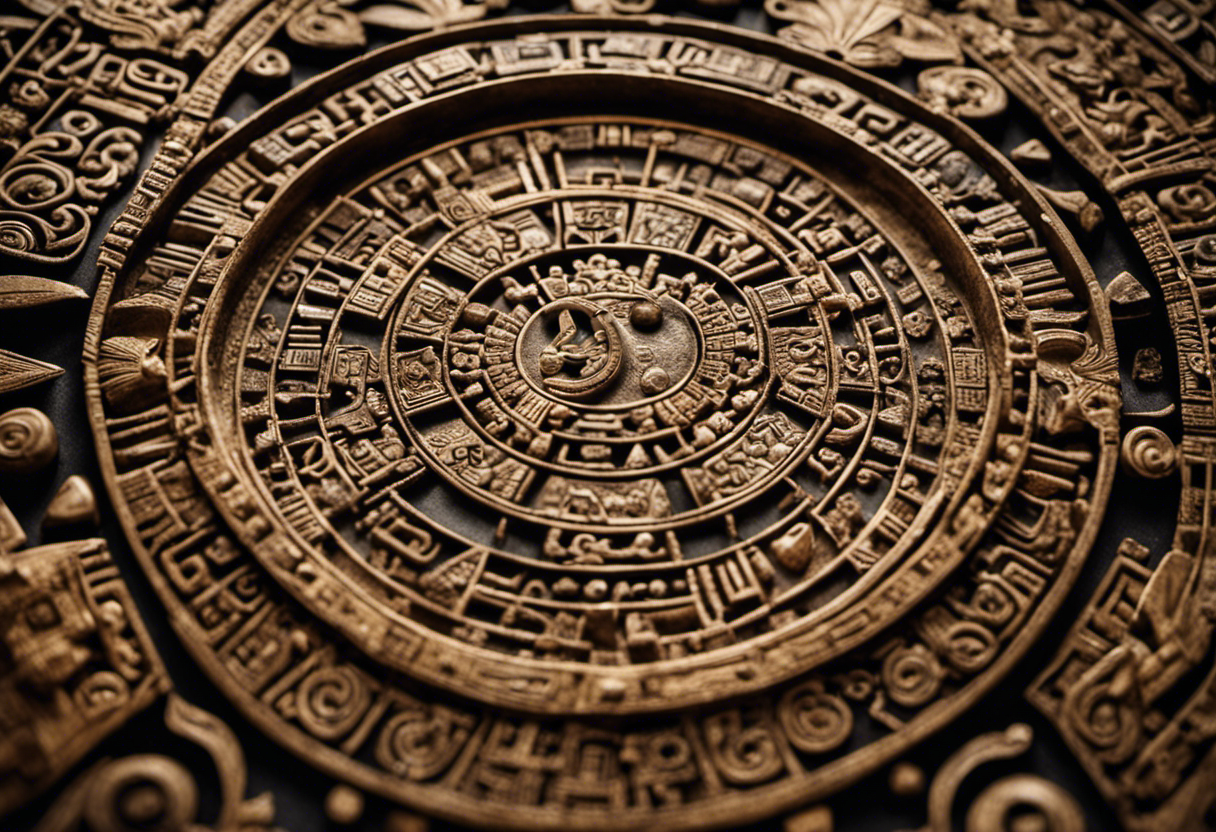

Extensive research and analysis have revealed fascinating insights into the intricate workings of the Inca calendar system. The Inca calendar symbols were not mere decorative elements but held significant astronomical connections. The Incas were keen observers of the celestial bodies and their movements, and they incorporated this knowledge into their calendar system.
The Inca calendar was based on a combination of lunar and solar cycles. They used a system called the ‘Huayna Panti’ that consisted of a lunar calendar, a solar calendar, and an agricultural calendar. The lunar calendar, known as ‘Aya Marka,’ was used to track the phases of the moon and determine religious and ceremonial events. The solar calendar, known as ‘Inti Panti,’ was based on the position of the sun and marked the changing seasons. The agricultural calendar, known as ‘Mita Panti,’ was used to determine the best times for planting and harvesting crops.
The Inca calendar symbols depicted various celestial objects such as the sun, moon, stars, and constellations. These symbols were used to track the movements of celestial bodies and predict astronomical events like eclipses and solstices. They also represented the Inca’s connection with the spiritual world and their belief in the divine nature of the universe.
Through the study of the Inca calendar symbols and their astronomical connections, researchers have gained valuable insights into the advanced astronomical knowledge of the Inca civilization. This knowledge not only helped them in their daily lives but also played a significant role in their religious and ceremonial practices.
The Discovery and Preservation of the Inca Calendar Stones
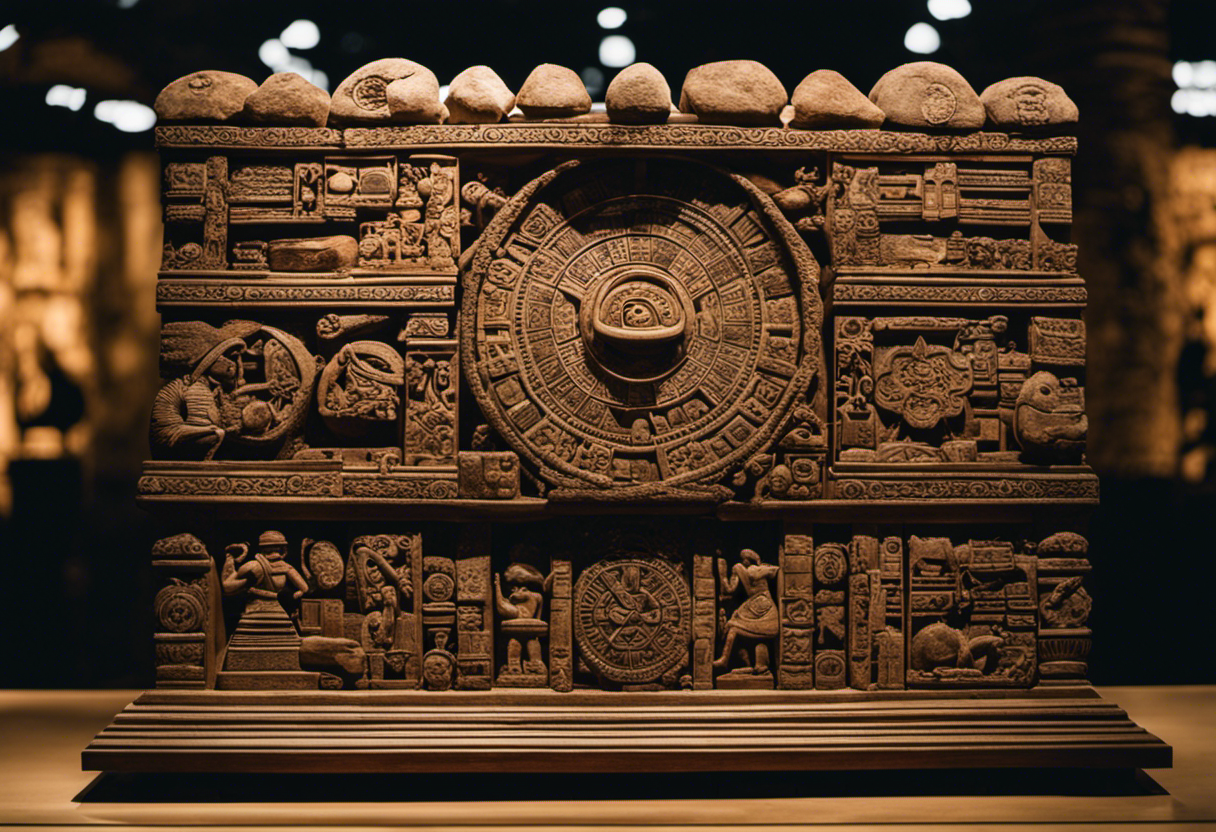

Archaeologists unearthed and safeguarded a collection of remarkable Inca calendar stones, providing invaluable insights into the ancient civilization’s timekeeping practices. These discoveries have not only shed light on the sophisticated calendar system of the Incas but also highlighted the importance of preservation techniques in protecting such archaeological treasures.
The preservation of the Inca calendar stones has been a meticulous process that involves a combination of scientific methods and expert knowledge. Given the fragile nature of these relics, archaeologists have employed various techniques to ensure their long-term conservation. Some of the preservation techniques used include:
-
Restoration: Skilled conservators carefully repair any damage to the calendar stones, ensuring that they are stable and structurally sound.
-
Climate control: Maintaining a controlled environment is crucial to prevent deterioration caused by temperature and humidity fluctuations. The calendar stones are stored in specially designed rooms with climate control systems to ensure optimal conditions.
-
Protective enclosures: Display cases or enclosures are used to protect the calendar stones from physical damage, dust, and light exposure. These enclosures are made of materials that are chemically stable and provide a barrier against external elements.
The archaeological significance of these preserved Inca calendar stones cannot be overstated. They provide valuable insights into the complex timekeeping practices of the Inca civilization. By studying these artifacts, researchers can gain a deeper understanding of how the Incas organized their society, conducted religious ceremonies, and managed agricultural activities according to their calendar system. The preservation efforts ensure that future generations can continue to learn from and appreciate these remarkable relics of the past.
Decoding the Ancient Inca Timekeeping Techniques
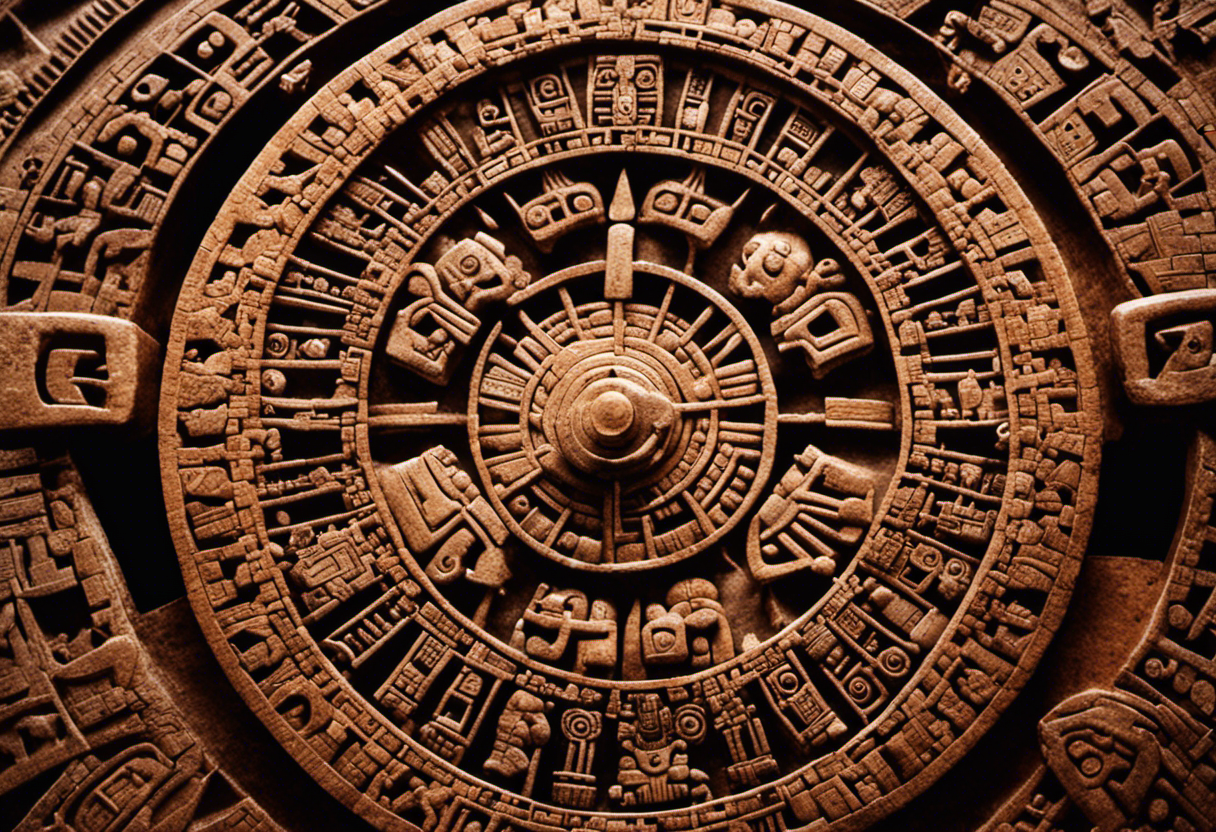

Interestingly, the ancient Inca timekeeping techniques can be decoded by analyzing the intricate patterns and symbols engraved on the calendar stones. These stones provide valuable insights into the Inca’s understanding of astronomical observations and their methods for interpreting time divisions.
The Inca civilization was highly advanced in their understanding of astronomy. They observed celestial bodies and their movements to determine the changing seasons and agricultural cycles. The calendar stones, such as the Intihuatana and the Qullqa, were essential tools in their timekeeping practices.
By studying the patterns and symbols on these stones, researchers have been able to decipher the Inca’s understanding of celestial events. For example, the Intihuatana stone, which translates to ‘Hitching Post of the Sun,’ was believed to be used to determine the solstices and equinoxes. Its design aligns with the movement of the sun, allowing the Inca to mark significant dates and seasons.
The Inca also divided time into various units, such as days, months, and years. By examining the calendar stones, researchers have been able to interpret how these divisions were calculated and measured. They discovered that the Inca used a 12-month lunar calendar, with each month having its own particular significance.
Exploring the Cultural and Historical Context of the Inca Calendar Relics


The Inca calendar relics provide valuable insights into the cultural and historical context of the ancient Inca civilization. These artifacts hold immense cultural significance as they represent the complex calendrical system developed by the Incas to understand and organize their world. The Inca calendar was not only a means to track time but also played a crucial role in religious ceremonies and agricultural practices.
In terms of historical significance, the Inca calendar relics shed light on the advanced knowledge and scientific achievements of the Inca civilization. The intricate designs and precise markings on these artifacts demonstrate the Inca’s understanding of astronomy and their ability to accurately predict celestial events such as solstices and equinoxes. This knowledge was crucial for agricultural planning and determining the appropriate time for planting and harvesting crops.
Furthermore, the Inca calendar relics provide evidence of the Inca’s highly organized and centralized society. The development and maintenance of such a sophisticated calendrical system required a strong political and administrative structure. It showcases the Inca’s ability to manage their vast empire and maintain control over their subjects.
Conclusion
In conclusion, the discovery and preservation of the Inca calendar relics provide a fascinating glimpse into the ancient timekeeping techniques of the Inca civilization.
These stones not only serve as a testament to the ingenuity and advanced knowledge of the Inca people, but also offer valuable insights into their cultural and historical context.
Like the intricate gears of a clock, the Inca calendar relics remind us of the intricate mechanisms of time that have shaped human history, evoking a sense of awe and wonder.

